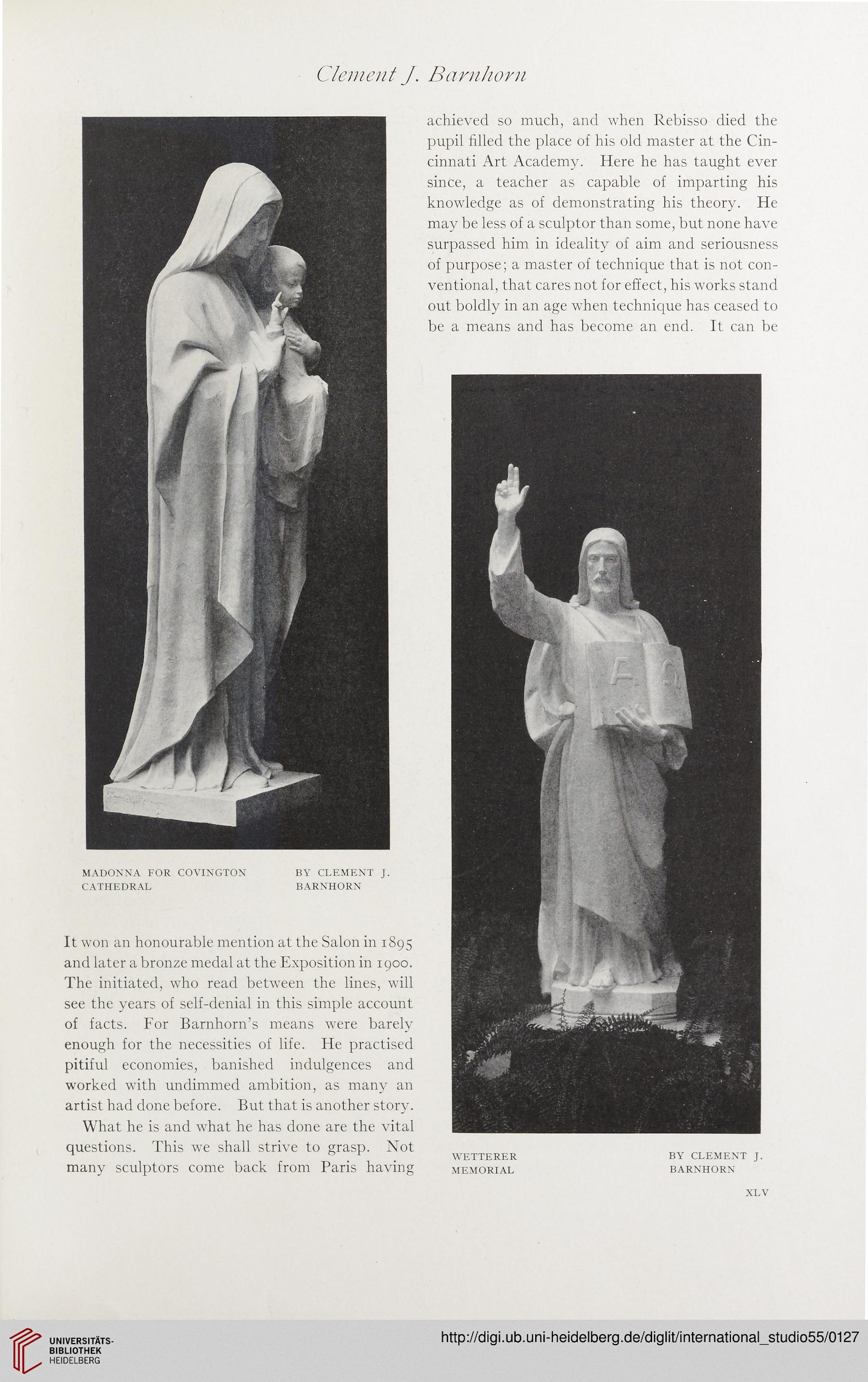Clement J. Barnhorn
MADONNA FOR COVINGTON BY CLEMENT J.
CATHEDRAL BARNHORN
It won an honourable mention at the Salon in 1895
and later a bronze medal at the Exposition in 1900.
The initiated, who read between the lines, will
see the years of self-denial in this simple account
of facts. For Barnhorn’s means were barely
enough for the necessities of life. He practised
pitiful economies, banished indulgences and
worked with undimmed ambition, as many an
artist had done before. But that is another story.
What he is and what he has done are the vital
questions. This we shall strive to grasp. Not
many sculptors come back from Paris having
achieved so much, and when Rebisso died the
pupil filled the place of his old master at the Cin-
cinnati Art Academy. Here he has taught ever
since, a teacher as capable of imparting his
knowledge as of demonstrating his theory. He
may be less of a sculptor than some, but none have
surpassed him in ideality of aim and seriousness
of purpose; a master of technique that is not con-
ventional, that cares not for effect, his works stand
out boldly in an age when technique has ceased to
be a means and has become an end. It can be
WETTE RE R
MEMORIAL
BY CLEMENT J.
BARNHORN
XLV
MADONNA FOR COVINGTON BY CLEMENT J.
CATHEDRAL BARNHORN
It won an honourable mention at the Salon in 1895
and later a bronze medal at the Exposition in 1900.
The initiated, who read between the lines, will
see the years of self-denial in this simple account
of facts. For Barnhorn’s means were barely
enough for the necessities of life. He practised
pitiful economies, banished indulgences and
worked with undimmed ambition, as many an
artist had done before. But that is another story.
What he is and what he has done are the vital
questions. This we shall strive to grasp. Not
many sculptors come back from Paris having
achieved so much, and when Rebisso died the
pupil filled the place of his old master at the Cin-
cinnati Art Academy. Here he has taught ever
since, a teacher as capable of imparting his
knowledge as of demonstrating his theory. He
may be less of a sculptor than some, but none have
surpassed him in ideality of aim and seriousness
of purpose; a master of technique that is not con-
ventional, that cares not for effect, his works stand
out boldly in an age when technique has ceased to
be a means and has become an end. It can be
WETTE RE R
MEMORIAL
BY CLEMENT J.
BARNHORN
XLV




